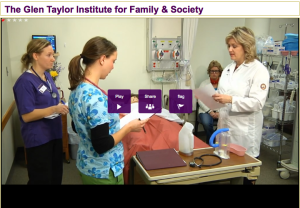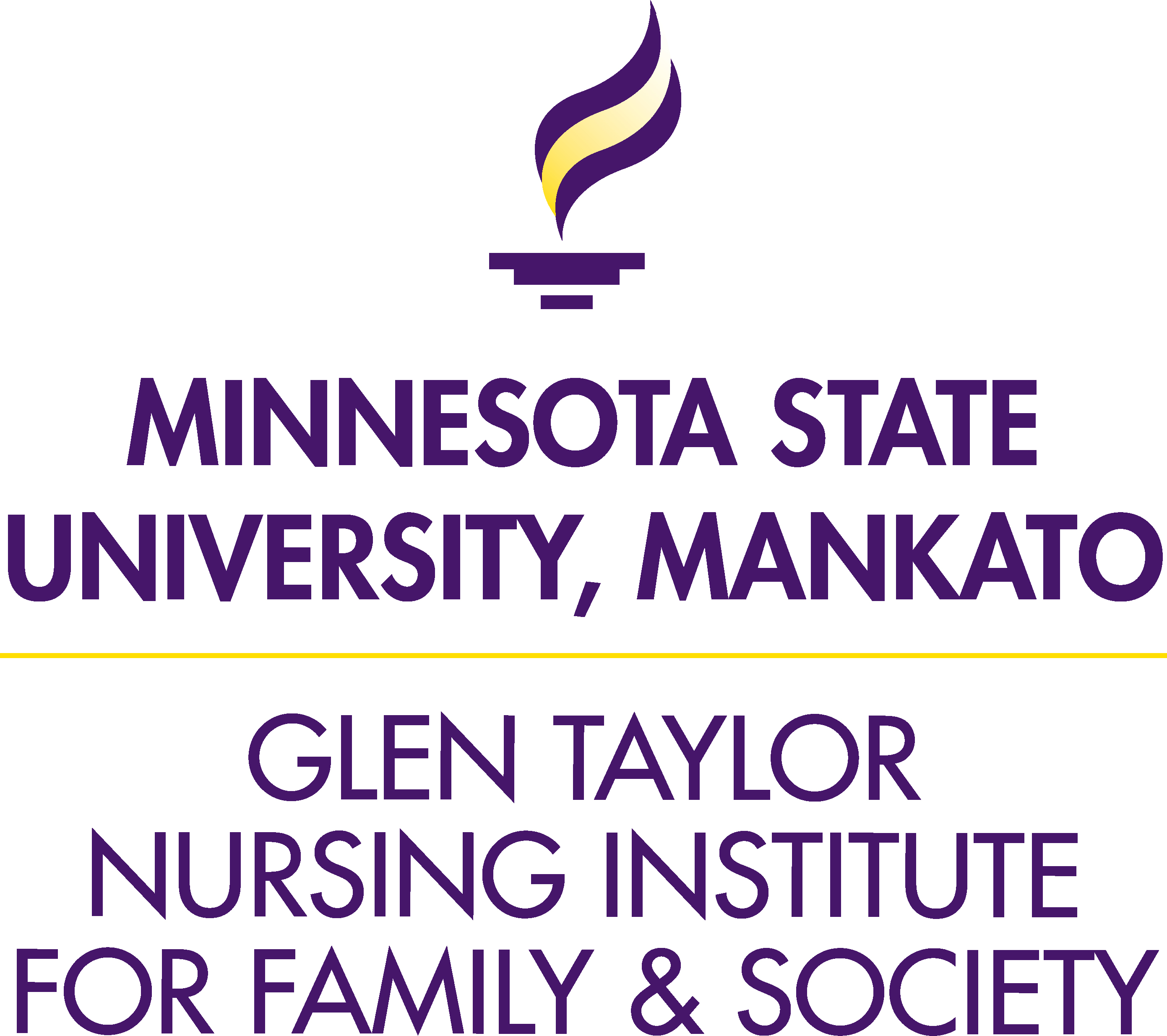(content under development)
Family Nursing Research Projects
A Caregiver Project: Moving on after a Brain Tumor
Janet Deatrick, PhD, RN, FAAN [IFNA Profile]
[email protected]
cu@home – YOUNG PARENT NURSE HOME VISITING program
Lindsay Smith, RN, BHlthSc(Nurs), MNS(Child Health), GradCertUnivLearn&Teach, PhD
[email protected]
Diabetes: A Family Matter
Strengthening Communities to Prevent Diabetes in Rural Appalachia
Sharon Denham, DSN, RN [IFNA Profile]
[email protected]
DPP Health Partners (Japanese)
Michiko Moriyama, PhD
[email protected]
Get a Head Start on Asthma Project
Indian Family Stories Project
Ann Garwick, PhD, RN LP LMFT FAAN [IFNA Profile]
[email protected]
Knowledge Translation of Family Systems Nursing to Practice Settings
Fabie Duhamel, RN, PhD
[email protected]
Supporting Traumatic Brain Injury Patients’ Family Members: Neurosurgical Nurses’ Evaluations in Finland
Kirsi Coco, PhD, MNSc, University of Eastern Finland
[email protected]
Hannele Turunen, PhD, Nurse Director (part-time) Kuopio University Hospital, Professor, University of Eastern Finland
[email protected]
Nursing Education Simulation Resources

Nurse educators at Minnesota State University Mankato (Angela Christian; Stacey Van Gelderen; Colleen Royle; Mary Ann McKenna Moon; and Norma Krumwiede) are involved in family nursing education using simulation at the Maverick Family Nursing Simulation Center. Their innovative leadership is focused on how the complexities of family-focused nursing communication and care can be practically incorporated into simulation strategies and experiences.
These resources are shared with the IFNA community through the generosity of The Glen Taylor Institute for Family & Society who is providing access through MavTUBE, Minnesota State University’s media clearinghouse. If you use these videoclips, please credit Minnesota State University, Mankato and The Glen Taylor Nursing Institute for Family & Society.
The video links depict a variety of aspects related to family nursing practices and elements of how family focused simulation is used at Minnesota State University Mankato. These videos are only a portion of the Mankato nurse educator group’s entire approach to simulation learning experiences and the curriculum that they have developed with a family nursing focus. For more information, contact IFNA member, Norma Krumwiede: [email protected].
Brief with Family Element
- This is a clip of the brief that begins the simulation.
http://mavtube.mnsu.edu/goto.html?id=0_zu0c0doj
Debrief
- This clip is a reflection that occurs after the simulation has been completed, which shows a faculty viewing the simulation with the participants. This debrief emphasizes nursing actions that are focused on the family and the family experience with illness that was addressed in the simulation. The faculty encourages a discussion of family constructs, family assessment, and family nursing practices.
http://mavtube.mnsu.edu/goto.html?id=0_qaatzfqo
Phone Communication
- This clip demonstrates how communication between the nurse and an outside entity such as a physician can be simulated.
http://mavtube.mnsu.edu/goto.html?id=0_e6lt0xi3
Role Instruction
- This clip shows how a faculty member prepares individuals who will be involved in the simulation experience. These instructions include scripts and cue cards for an individual who will be role playing a family member in the simulation.
http://mavtube.mnsu.edu/goto.html?id=0_kk76lw76
Simulation with a Family Focus
- This clip is a simulation experience with the family in the center of care. Different aspects of preparing for a simulation and the phases of a simulation are addressed using the Simulated Educational Experiences (SEE) Model.
http://mavtube.mnsu.edu/goto.html?id=0_p6y1piwr
Simulation without Family Focus
- This clip is a simulation experience that shows how nurses often view families. It is in stark contrast to the inclusion of the family that we are teaching our students.
http://mavtube.mnsu.edu/goto.html?id=0_ks3ipdjn
Additional simulation resources:
Eustace, R.; Stuber, M. A.; Heimbach, S. E.; Kelley, L. M. (2021). Geriatric Family Health Promotion Simulation Strategy
Eustace, R.; Stuber, M. A.; Heimbach, S. E.; Kelley, L. M. (2021).Teenager Family Health Promotion Simulation Strategy
Family nursing simulation bibliography:
Alexander, M. , Durham, C. F. , Hooper, J. I. , Jeffries, P. R. , Gold- man, N. , Kesten, K. S. , Kardong-Edgren, S. , Kesten, K. S. , Spec- tor, N. , Tagliareni, E. , Radtke, B. , & Tillman, C. (2015). NCSBN simulation guidelines for prelicensure nursing programs. Journal of Nursing Regulation, 6 (3), 39-42.
Al Sabei, S. D., & Lasater, K. (2016). Simulation debriefing for clinical judgment development: A concept analysis. Nurse Today, 45, 42-47.
Benner, P. (1984). From novice to expert: Excellence and power in clinical nursing practice. Menlo Park, CA: Addison-Wesley.
Cheng, A., Eppich, W., Kolbe, M., Meguerdichian, M., Bajaj, K., & Grant, V. (2020). A conceptual framework for the development of debriefing skills: A journey of discovery, growth, and maturity. Simulation in Healthcare, 15 (1), 55-60.
Cheng, A., Grant, V., Robinson, T., Catena, H., Lachapelle, K., Kim, J., Adler, M., & Eppich, W. (2016). The promoting excellence and reflective learning in simulation (PEARLS) approach to health care debriefing: A faculty development guide. Clinical Simulation in Nursing, 12 (10), 419-428.
Cheng, A., Morse, K. J., Rudolph, J., Arab, A. A., Runnacles, J., & Eppich, W. (2016). Learner-centered debriefing for health care simulation education: Lessons for faculty development. Simulation in Healthcare, 11 (1), 32-40.
Cheng, A. , Eppich, W. , Grant, V. , Sherbino, J. , Zendejas, B. , & Cook, D. A. (2014). Debriefing for technology-enhanced simulation: A systematic review and meta-analysis. Medical Education, 48 (7), 657-666.
Dubé, M. M., Reid, J., Kaba, A., Cheng, A., Eppich, W., Grant, V., & Stone, K. (2019). Pearls for systems integration: A modified pearls framework for debriefing systems-focused simulations. Simulation in Healthcare, 14 (5), 333-342.
Duarte, A., Silva, M., & Barbieri-Figueiredo, M. (2024). Construction and validation of a simulation scenario for teaching family-focused care in pediatric oncology. Journal of Family Nursing, 0(0). https://doi.org/10.1177/10748407231223768
Fey, M. K., Scrandis, D., Daniels, A., & Haut, C. (2014). Learning through debriefing: Students’ perspectives. Clinical Simulation in Nursing, 10 (5), e249-e256.
Forneris, S. G., Neal, D. O., Tiffany, J., Kuehn, M. B., Meyer, H. M, Blazovich, L. M., Holland, A., & Smerillo, M. (2015). Enhancing clinical reasoning through simulation debriefing: A multisite study. Nursing Education Perspectives, 36 (5), 304-310.
Frederick, J., & Van Gelderen, S. (2021, March). Revolutionizing simulation education with smart glass technology. Clinical Simulation in Nursing, 52(C), 43-49. https://doi.org/10.1016/j.ecns.2020.12.007
Frederick, J. & Van Gelderen, S. (2021). Revolutionizing Simulation Education with Smart Glass Technology. Clinical Simulation in Nursing, 52, p. 43-49. https://doi.org/10.1016/j.ecns.2020.12.007
Gordon, R. M. (2017). Debriefing virtual simulation using an online conferencing platform: Lessons learned. Clinical Simulation in Nursing, 13 (12), 668-674.
Gray, M., Rogers, D., Glynn, B., & Twomey, T. (2016). A multi-level approach to pre-briefing and debriefing in a pediatric interdisciplinary simulation. Pediatric Neonatal Nursing Open Journal, 3, 1-27.
Grossman, S., & Conelius, J. (2015). Simulation pedagogy with nurse practitioner students: Impact of receiving immediate individualized faculty feedback. Creative Nursing, 21 (2), 100-109.
Häusermann, S., Huber, E., Meichtry, A., Gautschi, F., Ris, I., & Deufert, D. (2023). Effects of high-fidelity simulation on self-efficacy in undergraduate nursing education regarding family systems care and early palliative care. Journal of Nursing Education and Practice, 13(12). https://doi.org/10.5430/jnep.v13n12p1
Hwang, W. J., & Lee, J. (2021). Effectiveness of the infectious disease (COVID-19) simulation module program on nursing students: Disaster nursing scenarios. Journal of Korean Academy of Nursing. https://doi.org/10.4040/jkan.21164
Khalil, A., Hantira, N. & Alnajjar, H. (2023). The effect of simulation training on enhancing nursing students’ perceptions to incorporate patients’ families into treatment plans: A randomized experimental study. Cureus, 15(8): e44152. https://doi.org/10.7759/cureus.44152
Killingley, J., & Dyson, S. (2016). Student midwives’ perspectives on efficacy of feedback after objective structured clinical examination. British Journal of Midwifery, 24 (5), 362-368.
Kolbe, M., Grande, B., & Spahn, D. R. (2015). Briefing and debriefing during simulation-based training and beyond: Content, structure, attitude and setting. Best Practice & Research Clinical Anesthesiology, 29 (1), 87-96.
Lefroy, J., Watling, C., Teunissen, P. W., & Brand, P. (2015). Guide- lines: the do’s, don’ts and don’t knows of feedback for clinical education. Perspectives on Medical Education, 4 (6), 284-299.
Lioce, L., Downing, D., Chang, T. P., Robertson, J. M., Ander- soon, M., Diaz, D. A., & Spain, A. E. (2020). Healthcare Simulation Dictionary p. 2nd ed. Rockville, MD: Agency for Healthcare Research and Quality Vol. AHRQ Publication No. 20-0019) .
Luft, J., & Ingram, H. (1963). The Johari window: A graphic model of awareness in interpersonal interactions. Group Processes, 50-125. https://www.convivendo.net/wp-content/ uploads/ 2009/05/johari- window- articolooriginale.pdf.
Morgan, P., Tarshis, J., LeBlanc, V., Cleave-Hogg, D., DeSousa, S., Haley, M., Herold-Mcllroy, J., & Law, J. (2009). Efficacy of high-fidelity simulation debriefing on the performance of practicing anaesthetists in simulated scenarios. British Journal of Anaesthesia, 103 (4), 531-537
O’Rae, A., Ferreira, C., Hnatyshyn, T., & Krut, B. (2021). Family nursing telesimulation: Teaching therapeutic communication in an authentic way. Teaching and Learning in Nursing,16 (4), p. 404-9. https://doi.org/10.1016/j.teln.2021.06.013
Palaganas, J. C., Fey, M., & Simon, R. (2016). Structured debriefing in simulation-based education. AACN Advanced Critical Care, 27 (1), 78-85 .
Reierson, I. A., Haukedal, T. A., Hedeman, H., & Bjørk, I. T. (2017). Structured debriefing: What difference does it make? Nurse Education in Practice, 25 , 104-110 .
Rojas, D. E., Parker, C. G., Schams, K. A., & McNeill, J. A. (2017). Implementation of best practices in simulation debriefing. Nursing Education Perspectives, 38 (3), 154-156 .
Rudolph, J. W., Raemer, D. B., & Simon, R. (2014). Establishing a safe container for learning in simulation: The role of the presimulation briefing. Simulation in Healthcare, 9 (6), 339-349.
Rudolph, J. W., Simon, R., Rivard, P., Dufresne, R. L., & Raemer, D. B. (2007). Debriefing with good judgment: Combining rigorous feedback with genuine inquiry. Anesthesiology clinics, 25 (2), 361-376.
Rudolph, J. W., Simon, R., Dufresne, R. L., & Raemer, D. B. (2006). There’s no such thing as “nonjudgmental” debriefing: A theory and method for debriefing with good judgment. Simulation in Healthcare, 1 (1), 49-55.
Ryoo, E. N., & Ha, E.-H. (2015). The importance of debriefing in simulation-based learning: Comparison between debriefing and no de-briefing. CIN: Computers, Informatics, Nursing, 33 (12), 538-545.
Sawyer, T., Eppich, W., Brett-Fleegler, M., Grant, V., & Cheng, A. (2016). More than one way to debrief: A critical review of healthcare simulation debriefing methods. Simulation in Healthcare, 11 (3), 209-217.
Silva, M., Tanqueiro, M., Veríssimo, C., Neves, M., Cruzeiro, C., & Coutinho, V. (2020). Evaluation of structured debriefing as a pedagogical strategy in family health nursing. Revista de Enfermagem Referência, 5(2), e19081. https://doi.org/10.12707/RIV19081
Sinclair, B. & Relouw, H. (2022). Family and community nursing: The use of an unfolding simulation via zoom, Clinical Simulation in Nursing, 68, p. 58-63. https://doi.org/10.1016/j.ecns.2022.04.003
Skedsmo, K., Nes, A., Stenseth, H. et al. (2023). Simulation-based learning in palliative care in postgraduate nursing education: A scoping review. BMC Palliative Care, 22, 30 https://doi.org/10.1186/s12904-023-01149-w
Van Gelderen, S., Engebretson, A., Miller, A., Hancock, A., Ehmke, S., Swan, M., & Garrow, A. (2019). A family-care rubric: Developing family-care and communication skills using simulation, Clinical Simulation in Nursing, 36, 47-58.
Van Gelderen, S.A., Krumwiede, N., Christian, A. (2016). Teaching family nursing through simulation: Family-care rubric development. Clinical Simulation in Nursing, 12, 159-170. http://dx.doi.org/10.1016/j.ecns.2016.01.002
Verkuyl, M., Lapum, J. L., Hughes, M., McCulloch, T., Liu, L., Mas- trilli, P., Romaniuk, D., & Betts, L. (2018). Virtual gaming simulation: Exploring self-debriefing, virtual debriefing, and in-person de- briefing. Clinical Simulation in Nursing, 20, 7-14.
Weston, C., Jones-Schubart, K., Hare, M., Gosselin, K.& Cook, S. (2021). Benefits of a pediatric clinic simulation using standardized patients in family nurse practitioner education. Nursing Education Perspectives, 42(6): p E31-E33. https://doi.org/10.1097/01.NEP.0000000000000871
Wittler, A., Perez, A.& Griffin, V. (2024). Telehealth virtual simulation across the family nurse practitioner curriculum. Nursing Education Perspectives. https://doi.org/10.1097/01.NEP.0000000000001262
Young, I., Yeong J. & Moon, S-H. (2024). Development and effectiveness of a metaverse reality-based family-centered handoff education program in nursing students. Journal of Pediatric Nursing, 76, p.176-191. https://doi.org/10.1016/j.pedn.2024.02.005
Family Nursing Lab Manual, Red River College (undergraduate level)
NOTE: The IFNA Communication and Education Committees have been longing to invite IFNA family nursing educators to share their family nursing course syllabi through the IFNA website. However, course materials are generally protected by institutional copyright. In an unprecedented exception, Red River College in Canada has offered approval for Course Leader, Wilma Schroeder to offer her Family Nursing Lab Manual to IFNA members.
Wilma Schroeder, MMFT, BN, RN, Course Leader – Family Nursing, Red River College, Winnipeg, Manitoba, Canada, has received approval from Red River College to post the Family Nursing Lab Manual she developed: http://blogs.rrc.Family Nursing Lab Manualca/healthsciences/programs/nursing/family-nursing/labs/. The “family nursing labs” are an important element of the undergraduate family nursing course that Wilma teaches. In addition to online tutorials and a face-to-face classes, more than half of the course is “family nursing labs” where both family nursing theory and family nursing application/skill development is emphasized. For more information, contact IFNA member Wilma Schroeder: [email protected]
Other family nursing education resources developed by Wilma Schroeder include:
YouTube video: How to Draw Genograms
YouTube video: How to Draw Ecomaps
IFNA YouTube video: Family Nursing Education: Wilma Schroeder, Part 1 (teaching circular questions)
IFNA YouTube video: Family Nursing Education: Wilma Schroeder, Part 2 (using family stories; families as faculty in teaching health care professionals)
Video Productions about Family Nursing Education, Practice, and Research
 Dr. Sharon Denham has produced 15 videos of IFNA members from 5 countries talking about their ideas for family nursing education, practice, and research. The videos are available on YouTube and were filmed during the 11th International Family Nursing Conference in Minneapolis in June 2013. They are a useful resource for IFNA members and offer a public identity for Family Nursing. 10/15 videos focus on Family Nursing Education strategies for teaching nursing students and practicing nurses. Click the links below to watch these amazing YouTube videos (organized alphabetically):
Dr. Sharon Denham has produced 15 videos of IFNA members from 5 countries talking about their ideas for family nursing education, practice, and research. The videos are available on YouTube and were filmed during the 11th International Family Nursing Conference in Minneapolis in June 2013. They are a useful resource for IFNA members and offer a public identity for Family Nursing. 10/15 videos focus on Family Nursing Education strategies for teaching nursing students and practicing nurses. Click the links below to watch these amazing YouTube videos (organized alphabetically):
- Family Nursing Education: Janet A. Deatrick, USA
- Family Nursing Education: Cristina Garcia-Vivar, Spain
- Family Nursing Education: Lorraine Holtslander, Canada
- Family Nursing Education: Maureen Leahey, Canada
- Family Nursing Education: Margherite Matteis, USA
- Family Nursing Education: Barbara Preusse-Bleuler, Switzerland
- Family Nursing Education: Carole Robinson, Canada
- Family Nursing Education: Wilma Schroeder, Canada – Part 1
- Family Nursing Education: Wilma Schroeder, Canada – Part 2
- Family Nursing Education: Barbara Voltenen, Denmark
- Family Nursing Practice: Linda Lindeke, USA
- Family Nursing Research: Cristina Garcia-Vivar, Spain
- Family Nursing Research: Sonja Meiers, USA – Part 1
- Family Nursing Research and Education: Sonja Meiers, USA – Part 2
- Family Nursing Research and Policy: Suzanne Feetham, USA
Additional video resources:
Looking Forward after cancer (23 videos): https://www.youtube.com/channel/UCqNGuI9Ig7XXOfjgZiDcc4Q
Communication (7 videos): https://youtube.com/playlist?list=PLAcyn8UhkqB04snG0k1r1ZpSzCzIPM6U8&si=blUmyQy-p0nt7Rhv
Family Assessment (5 videos): https://youtube.com/playlist?list=PLAcyn8UhkqB1keYcddAqsVvbRueU-KKiH&si=m-9VHvxYP3bgnKYx
